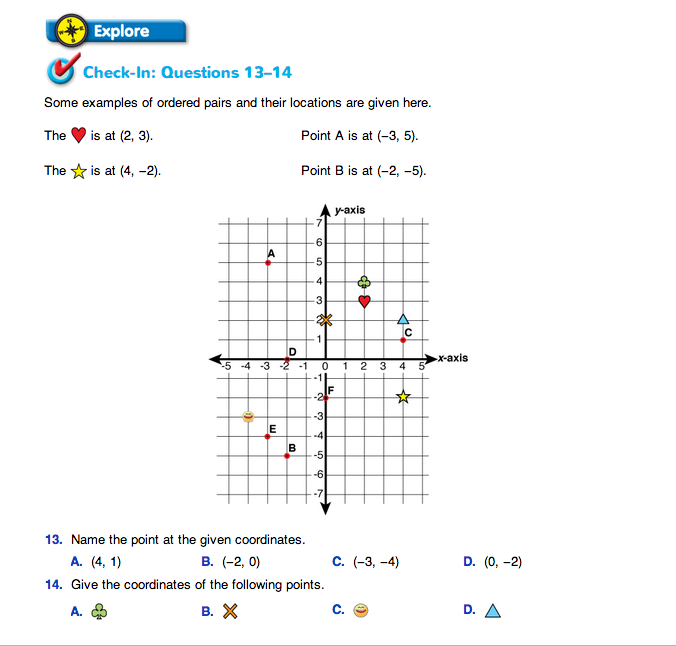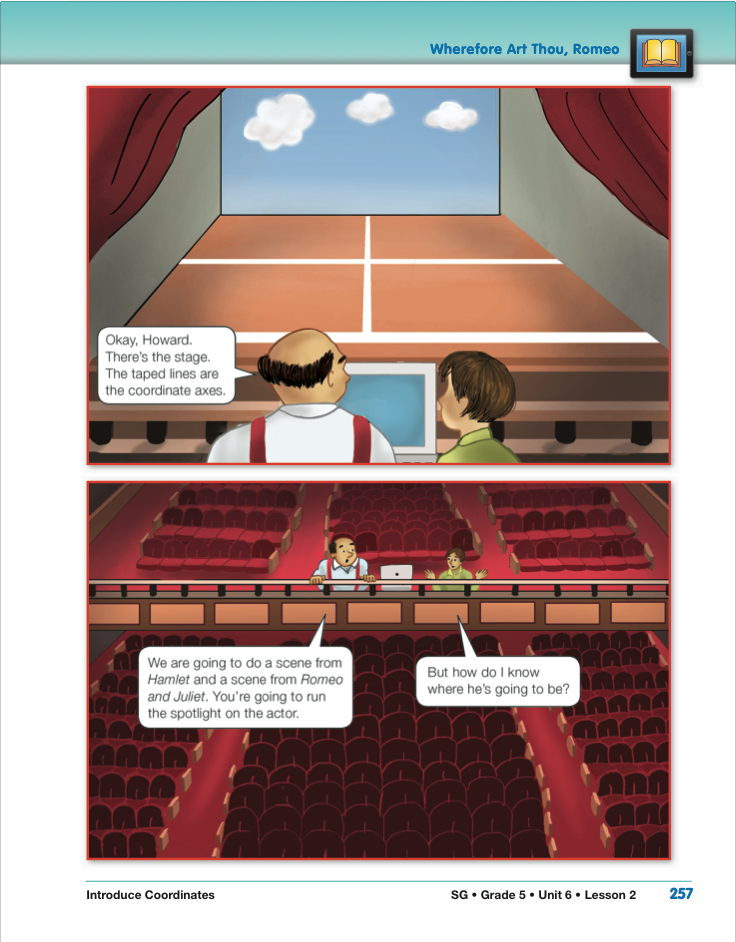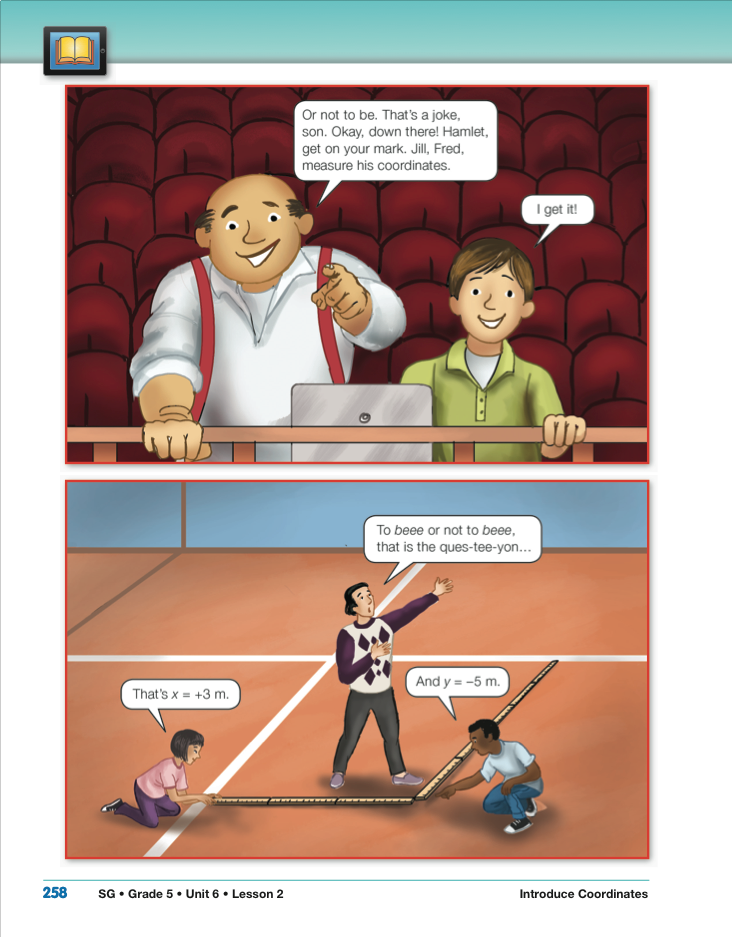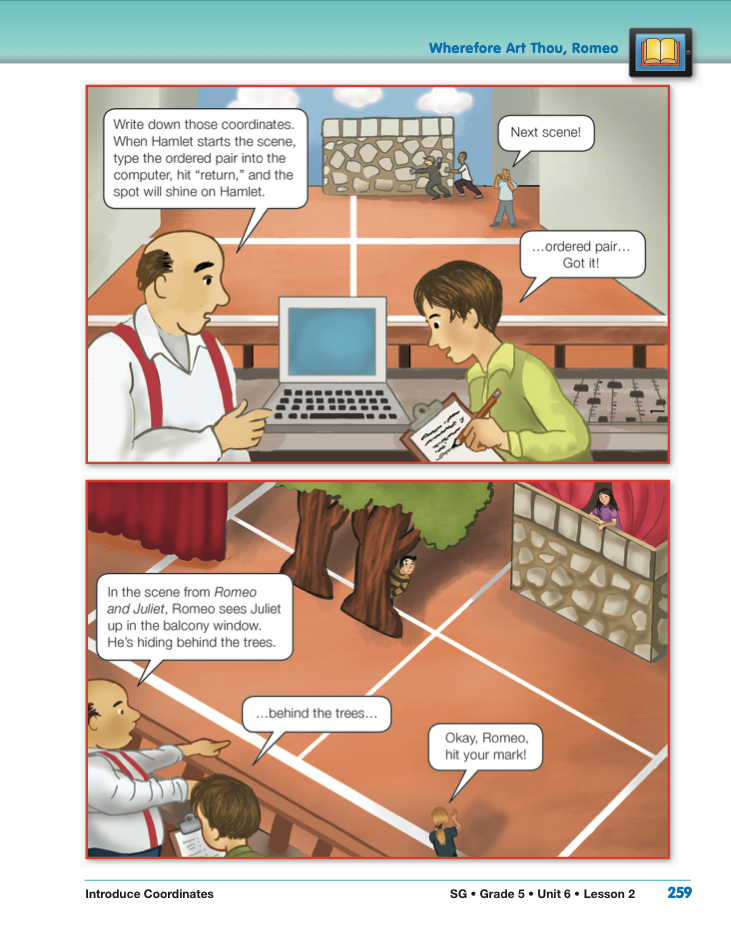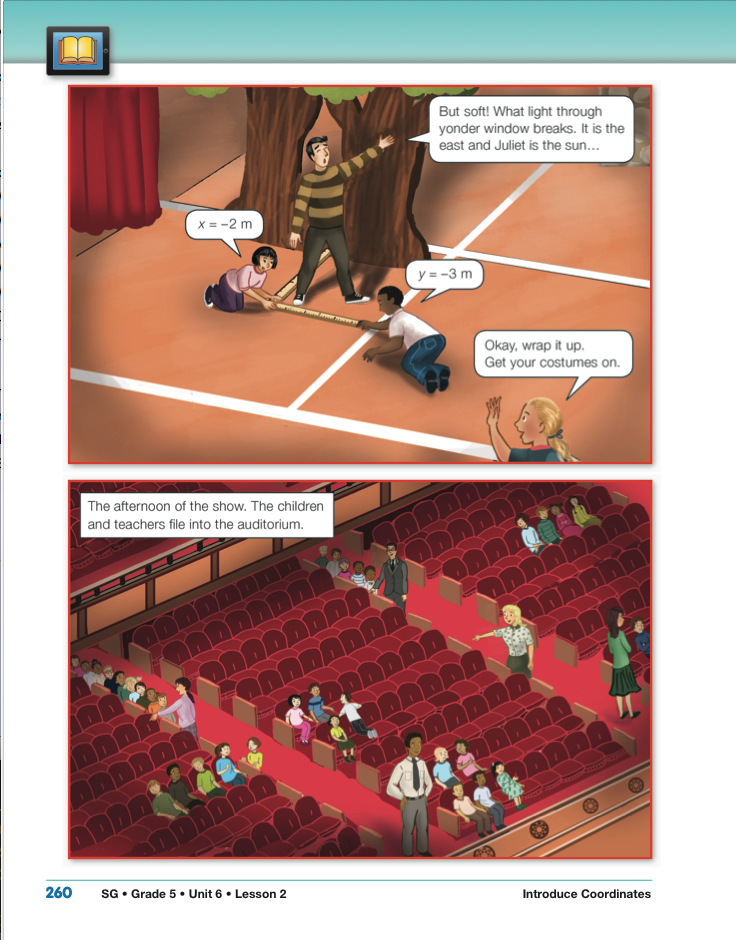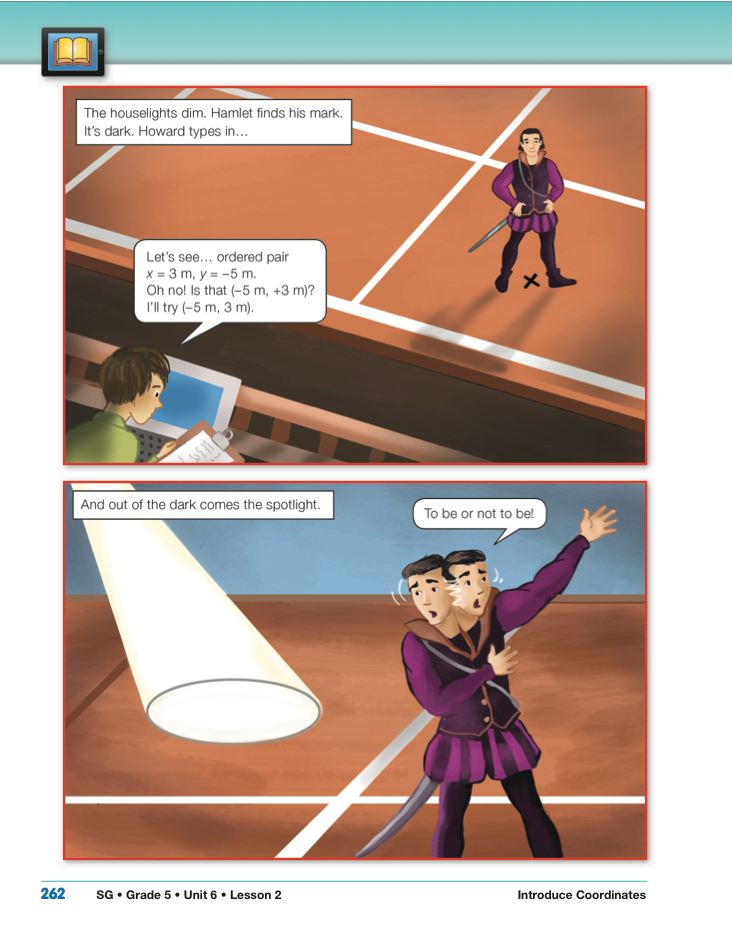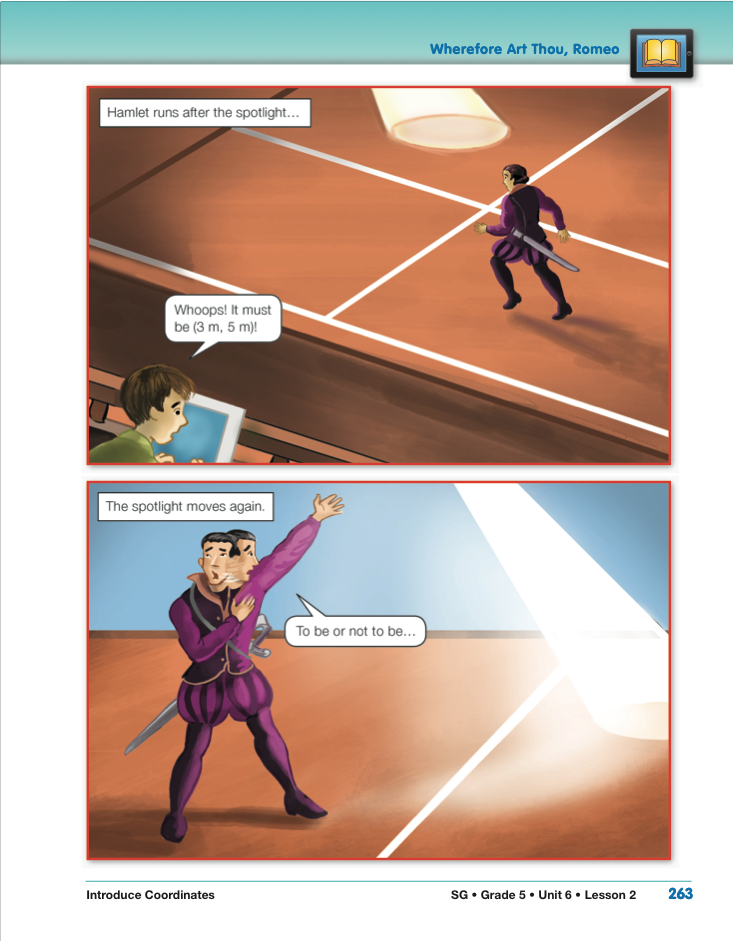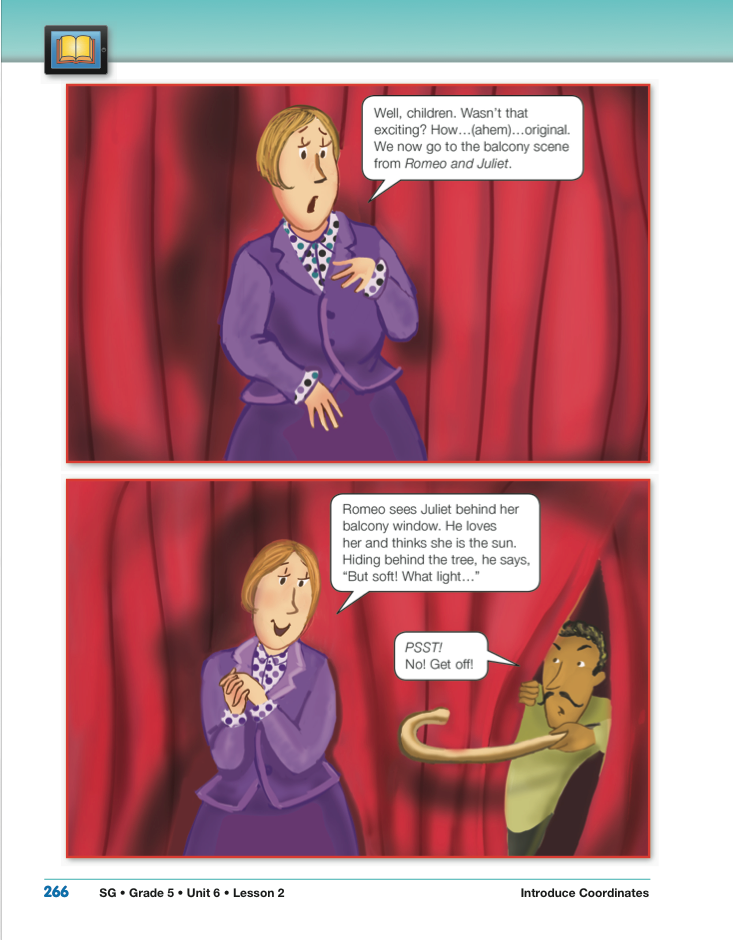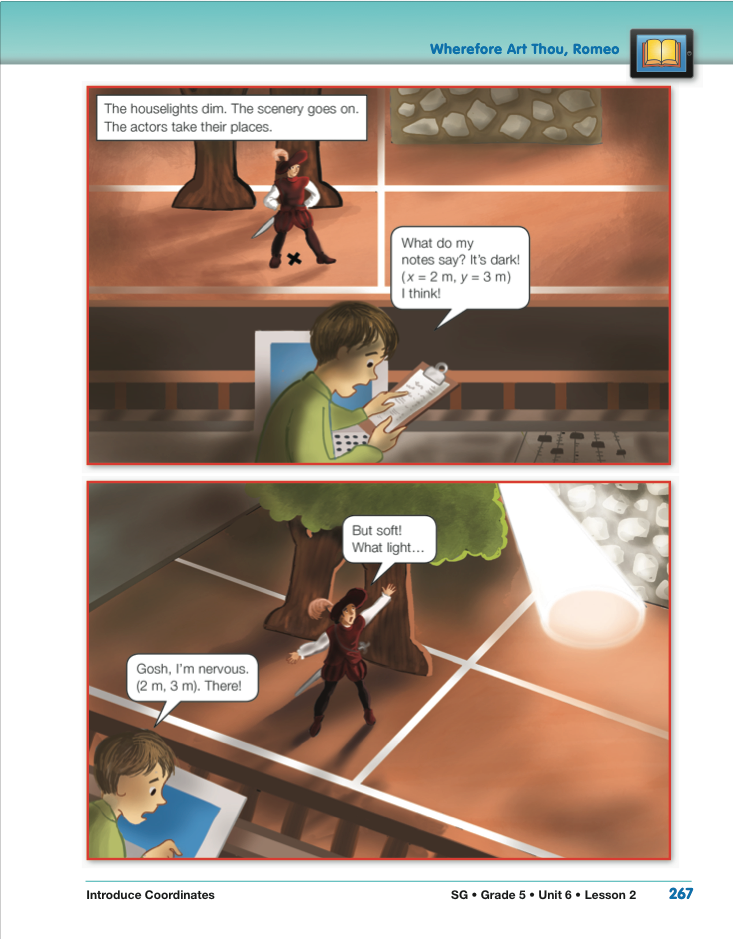Read Wherefore Art Thou Romeo. Read the story in the Wherefore Art Thou Romeo section of the Student Guide.
In the story, the stage manager of a troupe of visiting actors recruits a student to use ordered pairs and a computer to control the spotlight for his performers in the play. The student does not understand how ordered pairs work. His lack of understanding of the coordinate system wreaks havoc on a production of scenes from Hamlet and Romeo and Juliet. Give each student a copy of the Four-Quadrant Grid Paper Master. Use the prompts to help guide a class discussion of the story.
Page 257
- How can Howard use the coordinate axes to help him know where the actor might be? (Howard can use the coordinate axes as guides if he knows the coordinates where the actor will be.)
Page 258
- Where is the origin on the stage floor? (At the intersection of the two white lines in the center of the stage.)
- What are the two stagehands measuring? (They are measuring the coordinates for the actor's mark, or where the actor will stand. The actor is 3 meters to the right and 5 meters down from the origin.)
- What are the coordinates for where Hamlet is standing? (3, −5)
Ask students to locate and label this point on the Four-Quadrant Grid Paper.
Point out to students that “left” and “right” are the audience's left and right as the viewer looks at the stage. “Up” is toward the back of the stage and “down” is toward the front of the stage.
Page 259
- In what order should Howard type the coordinates for Hamlet into the computer?
(3, −5)
Ask students to locate this point on their grid paper.
- Why is it important to type the coordinates in order? (If Howard types in (−5, 3) instead of (3, −5) the spotlight will be in the wrong place.)
Page 260
- Look where Romeo is standing. In what order should Howard type these coordinates? (−2, −3)
Ask students to locate and label this point on their grid.
Page 262
- Why is the spotlight in the wrong place? (Howard entered the coordinates in the wrong order.)
- What should Howard have entered as coordinates? ((3, −5) instead of (3, 5))
Page 263
- What did Howard enter incorrectly? (He forgot the negative sign before the 5. The spotlight went to 3 right and 5 up instead of 3 right and 5 down.)
Page 266
- What do you think will happen in the next scene? (Answers will vary. Howard may have learned from his mistakes in the last scene or he might make a mistake again.)
Page 267
Ask students to locate
x = 2 and y = 3 on their grid.
- Look where Romeo is standing. Did Howard enter the correct coordinates? (Possible response: I do not think he did. Romeo is standing in the quadrant where both x and y are negative.)
- What coordinates should Howard have entered for Romeo? (Howard should have entered (−2, −3).)
- How do you plot an ordered pair correctly? (The first number tells how far left or right of the origin, the second number tells how far up or down from the origin.)
Finish reading the story and ask:
- What advice would you give the student?
- Let's go back and rethink the beginning of the story. What could Howard do to help make the spotlight hit the marks correctly? (Possible response: Make a map of the places the spotlight needs to hit and number them in order. He can then use the map to verify his thinking about the coordinates he is entering into the computer.)
Ask students to complete Questions 13–14 in the Student Guide independently.
Use Check-In Questions: 13–14 in the Student Guide to assess students' abilities to identify and describe locations using ordered pairs [E6].
The Barrier Reef Game can be used as targeted practice for these expectations. Make additional copies of the Four-Quadrant Grid Paper Master. Directions are in the Student Guide.













